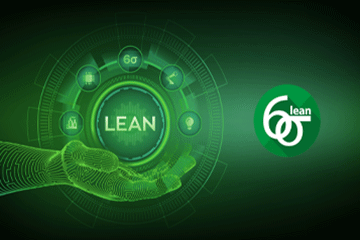Concept of SIX SIGMA Overview:
The Lean Six Sigma training helps in validating professionals who are skilled in identifying risks, errors, or defects in a business process and removing them. Getting a Six Sigma course & certification usually requires individuals to have a certain level of experience and testify their proficiency.
The certification can help you become a specialist in process improvement and will enhance your credibility.
Problem Solving Technique :
- This program can boost companies profit, rise productivity and quality.
- This program can help to do better time management and insure safety.
- Best and maximum productivity with less equipment and facilities.
Objective (why you should get a six sigma certification:):
- Help Your Organization Reduce Risk and Eliminate Errors and Defects.
- Improve Business Processes and Sustain Quality Improvement.
- Increase Your Value Across Industries.
- Ensure Compliance.
- Improve Management Skill.
About Green Belt:
Green belts are skilled team members with the goal of improving process excellence.
They contribute to closing the distance between Six Sigma theory and real-world implementation.
Six Sigma Green Belt applicants play an important part in process improvement, data inspection, and project management.
Overview of Green Belt Course:
- Overview of Six Sigma
- DMAIC Methodology Overview
- Financial Benefits of Six Sigma
- The Impact of Six Sigma to The Organization
- The Six Sigma Language
Course Duration:
Mode of Learning
-
- Online
- Class Room
- Blended Mode
- Lean Six Sigma Green Belt Course Content.
1.0 Define Phase
1.1 The Basics of Six Sigma
1.1.1 Meanings of Six Sigma
1.1.2 General History of Six Sigma & Continuous Improvement
1.1.3 Deliverables of a Lean Six Sigma Project
1.1.4 The Problem Solving Strategy Y = f(x)
1.1.5 Voice of the Customer, Business and Employee
1.1.6 Six Sigma Roles & Responsibilities
1.2 The Fundamentals of Six Sigma
1.2.1 Defining a Process
1.2.2 Critical to Quality Characteristics (CTQ's)
1.2.3 Cost of Poor Quality (COPQ)
1.2.4 Pareto Analysis (80:20 rule)
1.2.5 Basic Six Sigma Metrics
a. including DPU, DPMO, FTY, RTY Cycle Time, deriving these metrics and these metrics
1.3 Selecting Lean Six Sigma Projects
1.3.1 Building a Business Case & Project Charter
1.3.2 Developing Project Metrics
1.3.3 Financial Evaluation & Benefits Capture
1.4 The Lean Enterprise
1.4.1 Understanding Lean
1.4.2 The History of Lean
1.4.3 Lean & Six Sigma
1.4.4 The Seven Elements of Waste
a. Overproduction, Correction, Inventory, Motion, Overprocessing, Conveyance, Waiting.
1.4.5 5S
a. Straighten, Shine, Standardize, Self-Discipline, Sort
- 2.0 Measure Phase
2.1 Process Definition
2.1.1 Cause & Effect/ Fishbone Diagrams
2.1.2 Process Mapping, SIPOC, Value Stream Map
2.1.3 X-Y Diagram
2.1.4 Failure Modes & Effects Analysis (FMEA)
2.2 Six Sigma Statistics
2.2.1 Basic Statistics
2.2.2 Descriptive Statistics
2.2.3 Normal Distributions & Normality
2.2.4 Graphical Analysis
2.3 Measurement System Analysis
2.3.1 Precision & Accuracy
2.3.2 Bias, Linearity & Stability
2.3.3 Gage Repeatability & Reproducibility
2.3.4 Variable & Attribute MSA
2.4 Process Capability
2.4.1 Capability Analysis
2.4.2 Concept of Stability
2.4.3 Attribute & Discrete Capability
2.4.4 Monitoring Techniques
- 3.0 Analyze Phase
3.1 Patterns of Variation
3.1.1 Multi-Vari Analysis
3.1.2 Classes of Distributions
3.2 Inferential Statistics
3.2.1 Understanding Inference
3.2.2 Sampling Techniques & Uses
3.2.3 Central Limit Theorem
3.3 Hypothesis Testing
3.3.1 General Concepts & Goals of Hypothesis Testing
3.3.2 Significance; Practical vs. Statistical
3.3.3 Risk; Alpha & Beta
- 4.0 Improve Phase
4.1 Simple Linear Regression
4.1.1 Correlation
4.1.2 Regression Equations
4.1.3 Residuals Analysis
4.2 Multiple Regression Analysis
4.2.1 Non- Linear Regression
4.2.2 Multiple Linear Regression
4.2.3 Confidence & Prediction Intervals
4.2.4 Residuals Analysis
4.2.5 Data Transformation, Box Cox
- 5.0 Control Phase
5.1 Lean Controls
5.1.1 Control Methods for 5S
5.1.2 Kanban
5.1.3 Poka-Yoke (Mistake Proofing)
5.2 Statistical Process Control (SPC)
5.2.1 Data Collection for SPC
5.2.2 I-MR Chart
5.2.3 Xbar-R Chart
5.2.4 U Chart
5.2.5 P Chart
5.2.6 NP Chart
5.2.7 X-S chart
5.2.8 CumSum Chart
5.2.9 EWMA Chart
5.2.10 Control Chart Anatomy
5.3 Six Sigma Control Plans
5.3.1 Cost Benefit Analysis
5.3.2 Elements of the Control Plan
5.3.3 Elements of the Response Plan
